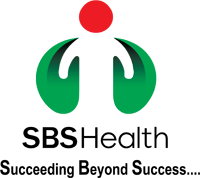Pilonidal Flap Surgery: Procedure, Benefits, and Recovery
Dr. Aman Priya Khanna

Treatment Duration
30 Minutes
------ To ------60 Minutes
Treatment Cost
₹ 30,000
------ To ------₹ 70,000

Table of Contents
- What is pilonidal sinus flap surgery?
- Who needs pilonidal sinus flap surgery?
- Benefits of Pilonidal Flap Surgery
- Before and on the Day of Pilonidal Flap Surgery
- The Procedure of Pilonidal Flap Surgery
- After Pilonidal Flap Surgery and Recovery
- Risks and Complications of Pilonidal Flap Surgery
- Risks of Delaying Pilonidal Flap Surgery
- Cost of Pilonidal Flap Surgery
- Takeaway
According to a study by Rajasekharan et al., 2019, the prevalence of pilonidal sinus in Asia is 6.6%. Pilonidal sinus flap surgery treats this condition when it does not respond to other treatments. The procedure is easy and reduces the risk of recurrence.
With proper post-operative care, patients can also expect improved quality of life. Want to know more about the procedure? Continue reading to find pilonidal sinus surgery recovery time, benefits, risks, and costs.
Procedure Name | Pilonidal Flap Surgery |
Conditions Treated | Pilonidal sinus |
Benefits of the Procedure | Shorter hospital stay, quick recovery, low recurrence rate |
Treated By | General or colorectal surgeons |
You can check Pilonidal Flap Surgery Cost here.
What is pilonidal sinus flap surgery?
Pilonidal sinus flap surgery is used to treat a chronic pilonidal sinus (a small cyst or abscess that forms near the tailbone at the top of the buttocks). The procedure involves excising the infected cyst and sinus tracts and then covering the surgical site with a flap of healthy skin and tissue. This flap helps close the wound and reduces the chances of recurrence.
Pilonidal Flap Surgery Videos by HexaHealth
Expert Doctors (10)
NABH Accredited Hospitals (10)


Who needs pilonidal sinus flap surgery?
Pilonidal flap surgery is needed for individuals with complex or recurrent pilonidal sinus disease. The procedure is performed when less invasive treatments like injections or drainage fail to treat the condition. It is recommended in cases where the pilonidal cyst worsens, forming a sinus cavity beneath the skin.
Symptoms and conditions that may indicate a need for surgery include:
Chronic pain and discomfort
Recurrent infections
Multiple sinus tracts
Persistent drainage
Painful mass or abscess
Benefits of Pilonidal Flap Surgery
Pilonidal treatment with flap reconstruction offers several benefits compared to open surgery. According to a study by Doll et al., 2022, the recurrence rate of the disease was 11.7% for primary open treatment and only 5.8% for the Limberg flap technique. Other advantages of the procedure are as follows:
Quick healing time
Shorter hospital stay
Early return to daily life
Low recurrence rate
Before and on the Day of Pilonidal Flap Surgery
Patients consult with a colorectal surgeon to prepare for their pilonidal flap surgery. The specialist provides detailed instructions to be followed before and on the day of the procedure. These include:
Before Pilonidal Flap Surgery
During the initial consultation for pilonidal sinus surgery, patients should address all their questions and doubts. They will need to follow their surgeon’s specific guidelines to ensure a successful procedure and smooth recovery:
Parameters | Pre-requisites |
Pre-op Assessments |
|
Risk Evaluation |
|
Medications | Stopping blood thinning medications 7-10 days before the procedure |
Anaesthesia Selection | Spinal or general |
Fasting | 8-10 hours before surgery (for general anaesthesia) |
On the Day of Pilonidal Flap Surgery
Patients should arrive at the hospital well before their scheduled time on the day of the pilonidal flap surgery. This allows time to complete any remaining administrative tasks. They will then be prepped for the procedure, which includes the following steps:
Parameters | Pre-requisites |
Consent | Mandatory |
Surgical Preparation |
|
Physical Evaluation | Vitals check-up (blood pressure, oxygen, temperature, etc.) |
IV Line | Yes, for fluids and medications |
Patient Positioning | Prone (lying face down) |
The Procedure of Pilonidal Flap Surgery
The Limberg flap and Karydakis lap methods are two common techniques used in pilonidal flap surgery to treat chronic pilonidal disease. The Limberg flap may take 29 to 54 minutes, whereas Karydakis may take 22 to 48 minutes. Both procedures are performed under spinal or general anaesthesia and involve the following steps:
Limberg Flap Method
It is performed for people with extensive or recurrent pilonidal disease. It is performed as described below:
The surgeon makes a rhomboid-shaped incision around the pilonidal sinus to remove the infected cyst and the underlying tissue.
Another incision is made to dissect healthy tissue from the buttock and create a rhomboid-shaped flap.
One side of the flap is swung into position and sutured into place. It covers the wound entirely and leaves the wound slightly off the midline.
Drainage tubes are placed to prevent fluid accumulation.
Karydakis Flap Method
It reduces the risk of recurrence. The steps involved are mentioned below:
An elliptical incision (asymmetrical to one side, away from the midline) is made around the pilonidal cyst to remove the infected cysts and any sinus tracts.
A flap is created from healthy tissue on the lateral side of the excised area.
The flap is moved across the midline to cover the wound entirely and is sutured in place.
Drains may be placed to facilitate drainage of fluids.
Note: The treatment approach is selected based on the patient’s condition and the surgeon’s opinion.
After Pilonidal Flap Surgery and Recovery
Proper post-operative care is essential after pilonidal sinus flap surgery to ensure healing and prevent complications. Patients should follow their surgeon’s instructions in the hospital and home for a smooth recovery.
In Hospital Recovery
Patients can return home on the same day of the procedure. However, if there are any complications, they may need to stay in the hospital for 2-3 days. During this time, they can expect the following:
Patients are moved to a recovery area where the nursing staff monitors the effect of anaesthesia and checks their vital signs.
Antibiotics and pain relievers are administered to reduce the risk of infections and manage post-operative discomfort, respectively.
The surgical area is checked for excessive bleeding or drainage, and the wound is appropriately dressed.
Individuals are asked to lie on their front or side and not directly on the wound.
They are encouraged to move gently to promote blood circulation and prevent blood clots.
At-home Recovery
The pilonidal sinus flap surgery recovery time is usually two to three weeks. After this period, patients can return to work. During this time, it is important to follow these guidelines at home:
Take prescribed pain medications as directed to alleviate discomfort.
Follow the surgeon’s instructions for cleaning the wound and changing dressings to prevent infection.
Shower regularly to keep the area clean, but avoid soaking in a bathtub or swimming. Dry the treatment area with a hairdryer in a cool setting.
Do not put pressure on the treated site for three weeks.
First Follow-up Appointment
The first follow-up visit is scheduled two weeks after the surgery. During this appointment, the surgeon removes the sutures and examines the surgical site to ensure the wound is healing properly.
The next visits will be scheduled at three and six months after discharge from the hospital.
Risks and Complications of Pilonidal Flap Surgery
According to a study by Zou et al., 2022, there is no significant difference between complications for the Limberg and Karydakis methods. One of the early complications of the procedures is wound splitting, which occurs in about 16-17.4% of cases. Other risks of the procedure are as follows:
Infection
Flap necrosis (death of body tissue)
Seroma or haematoma formation (fluid or blood accumulation under the flap)
Aesthetic dissatisfaction
Recurrence
When to call a doctor?
After pilonidal sinus flap surgery, patients should monitor their recovery closely. They must contact their doctor immediately if they experience any of the following symptoms:
A fever above 101 F
Severe pain
Increased redness, swelling, and warmth around the wound
Drainage of pus from the incision
Risks of Delaying Pilonidal Flap Surgery
Delaying pilonidal sinus flap surgery can lead to several complications that may worsen the condition over time. Mentioned below are some of the primary risks associated with postponing treatment:
As the condition progresses, patients may experience worsening pain, swelling, and discomfort, which can significantly affect daily activities.
The infected pilonidal sinus may continue to progress, increasing the risk of abscess formation and recurrent infections.
Without treatment, it can increase the risk of squamous cell carcinoma (a type of skin cancer).
Cost of Pilonidal Flap Surgery
The pilonidal sinus surgery cost in India varies significantly from one individual to another. It generally starts from ₹ 30,000 and reaches a maximum of ₹ 70,000. The average price is ₹ 45,000.
Procedure Name | Estimated Cost Range |
Pilonidal Flap Surgery | ₹ 30,000 to ₹ 70,000 |
Note: The prices mentioned above are approximate. Patients should talk to HexaHealth experts for current and accurate expenses.
Factors that affect the expenditure of the procedure include:
Surgical Technique: The type of flap method (Limberg or Karydakis) and the complexity of the surgery can impact the cost. More specialised techniques may be costlier.
Surgeon’s Fees: Specialists with significant experience may charge higher fees, affecting the total price.
Hospital Charges: Private healthcare facilities are more expensive than government centres due to better amenities and services.
Geographic Location: Expenses vary significantly by region due to differences in living costs and healthcare infrastructure. Prices are higher in metropolitan cities than in small towns.
Preoperative and Post-operative Care: The cost of pre-surgery consultations, diagnostic tests, and follow-up appointments can also affect the final bill.
Takeaway
Pilonidal sinus flap surgery offers an effective solution for patients struggling with chronic or recurrent pilonidal sinus disease. The procedure removes the infected tissue and uses a healthy flap to ensure better wound coverage and faster healing. This approach minimises recurrence risk while providing long-term relief.
HexaHealth is here to guide you through every step of the process, from diagnosis and preparation to post-operative care. We help ensure a smoother pilonidal sinus flap surgery recovery time by connecting you with expert surgeons. With our network of specialists, you will receive personalised care for effective treatment. Contact us TODAY!
Suggested Reads
| Pilonidal Sinus Laser Surgery |
Exercises for pilonidal sinus |
| Endoscopic Ablation for a Pilonidal Sinus |
Diet for Pilonidal Sinus |
Frequently Asked Questions (FAQ)
What is pilonidal flap surgery?
Pilonidal sinus flap surgery is a specialised procedure for treating pilonidal sinus disease. It involves removing the infected tissue and covering the wound with a flap of healthy skin. This promotes healing and reduces the risk of recurrence.
How is pilonidal flap surgery performed?
Pilonidal sinus flap surgery can be performed using the Limberg or Karydakis techniques. The exact procedure depends on these methods. However, the general steps are as follows:
The infected sinus tissue is excised
A flap of healthy skin is rotated over the area
The flap is stitched into place, allowing the wound to heal
What are the benefits of flap surgery compared to other treatments?
Flap surgery offers various benefits compared to traditional excision or drainage treatments. These advantages include:
Complete wound closure
Minimised recurrence rates
Faster healing time
Shorter hospital stay
What is the success rate of pilonidal flap surgery?
According to Dogru et al., the success rate of the Limberg flap method in the treatment of primary pilonidal disease is 95%. Success depends on proper post-operative care, wound management, and adherence to follow-up visits.
How much does pilonidal sinus surgery cost?
The pilonidal sinus surgery cost varies widely, ranging from ₹ 30,000 to ₹ 70,000. It depends on the surgical method, surgeon’s fees, hospital charges, and geographic location. Consult HexaHealth experts for accurate prices.
Is pilonidal sinus surgery covered under insurance?
Yes, pilonidal sinus surgery is covered under insurance if deemed medically necessary. The extent of coverage differs depending on the insurance provider and specific policy. Therefore, patients are advised to check details with HexaHealth consultants before proceeding.
How long does it take to recover from pilonidal flap surgery?
Pilonidal sinus flap surgery recovery time is two to three weeks for initial healing. Full recovery may take longer, depending on the patient’s overall health, adherence to care instructions and the complexity of the condition.
What post-operative care is required after pilonidal flap surgery?
Post-operative care after pilonidal flap surgery is crucial to ensure a quick recovery. It involves the following:
Ensuring proper wound care
Not putting pressure on the treated area
Taking prescribed antibiotics and pain medications
Attending all follow-up visits
Can pilonidal flap surgery be done under local anaesthesia?
No, pilonidal flap surgery cannot be performed under local anaesthesia. It is performed under general or spinal anaesthesia.
How soon can I resume normal activities after pilonidal flap surgery?
Most patients can expect healing after pilonidal sinus flap surgery within two to three weeks. They can resume normal activities like work three weeks after the procedure.
Is pilonidal flap surgery a permanent solution for pilonidal disease?
Pilonidal flap surgery aims to provide a permanent solution for pilonidal disease by removing the infected tissue and covering the wound. Although effective, maintaining proper hygiene is important to help prevent future recurrences.
What are the chances of recurrence after pilonidal flap surgery?
The chances of recurrence after pilonidal flap surgery are relatively low, ranging from 1%-15%. Following post-operative care instructions, managing the wound properly, and attending follow-up visits reduce the likelihood of recurrence.
Can pilonidal flap surgery be done as an outpatient procedure?
Yes, pilonidal flap surgery can be performed as an outpatient procedure, enabling patients to return home the same day. However, complex cases may require an overnight hospital stay or more for monitoring and management of potential complications.
Are there any alternative treatments to pilonidal flap surgery for pilonidal disease?
Yes, various alternative treatments are available which can be used when the pilonidal disease is not chronic or recurrent. These include:
Incision and drainage of abscesses
Wide local excision
Marsupialisation (excision is followed by removing the roof of the cyst)
Excision with closure
More Treatment options
References
All the articles on HexaHealth are supported by verified medically-recognized sources such as; peer-reviewed academic research papers, research institutions, and medical journals. Our medical reviewers also check references of the articles to prioritize accuracy and relevance. Refer to our detailed editorial policy for more information.
- Rajasekharan D, Nagaraja JB, Subbarayappa S. Pilonidal Sinus in South India: A Retrospective Review. Indian Journal of Colo-Rectal Surgery [Internet]. 2019 Dec 1 [cited 2024 May 15];2(3):71.

- Pilonidal Cyst Surgery: Procedure, Recovery, and Aftercare [Internet]. Healthline. 2019 [cited 2024 May 15].

- Tatar C, Gorgun E. The Limberg flap repair for complex and recurrent pilonidal disease. Seminars in Colon and Rectal Surgery [Internet]. 2022 Dec 1 [cited 2024 May 15];33(4):100915.

- Annals of Coloproctology [Internet]. coloproctol.org. [cited 2024 May 15].

- SLHD - Department of Colorectal Surgery - Karydakis Procedure [Internet]. www.slhd.nsw.gov.au. [cited 2024 May 15].

- Aithal SK, Rajan CS, Reddy N. Limberg Flap for Sacrococcygeal Pilonidal Sinus a Safe and Sound Procedure. Indian Journal of Surgery. 2012 May 6;75(4):298–301.

- O M, M B, T B, O O, M O. Limberg flap procedure for pilonidal sinus disease: results of 353 patients. Langenbeck’s archives of surgery [Internet]. 2008 Mar 1;393(2).

- Pilonidal cyst - Symptoms and causes [Internet]. Mayo Clinic.

- Aydın İ. How effective and safe is Limberg Flap in the treatment of pilonidal sinus. Haydarpasa Numune Training and Research Hospital Medical Journal. 2020;

- RACGP - Pilonidal disease practice points [Internet]. Racgp.org.au. 2019.

- Pilonidal sinus: Symptoms, pictures, and treatment [Internet]. www.medicalnewstoday.com. 2022 [cited 2024 May 15].

Last Updated on: 27 May 2024
Reviewer

Dr. Aman Priya Khanna
MBBS, DNB General Surgery, Fellowship in Minimal Access Surgery, FIAGES
14 Years Experience
Dr Aman Priya Khanna is a well-known General Surgeon, Proctologist and Bariatric Surgeon currently associated with HealthFort Clinic, Health First Multispecialty Clinic in Delhi. He has 14 years of experience in General Surgery, Proctolo...View More
Author

Sparshi Srivastava
B.Tech Biotechnology (Bansal Institute of Engineering and Technology, Lucknow)
2 Years Experience
An ardent reader, graduated in B.Tech Biotechnology. She was previously associated with medical sciences secondary research and writing. With a keen interest and curiosity-driven approach, she has been able to cont...View More
Latest Health Articles

























